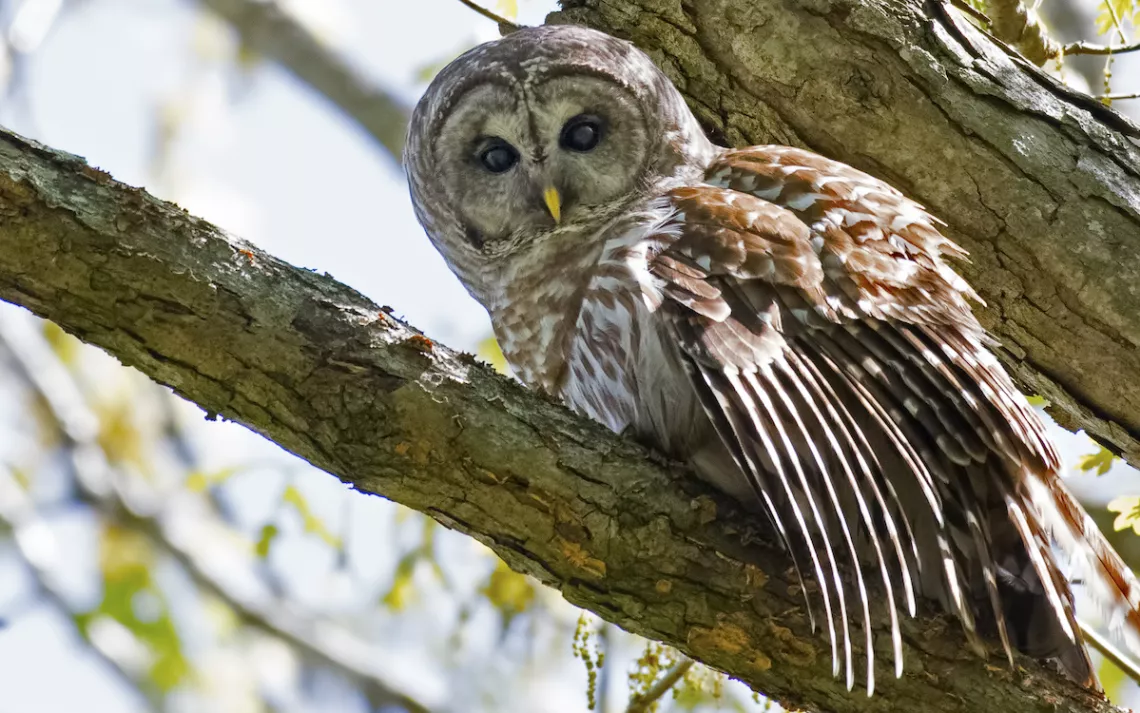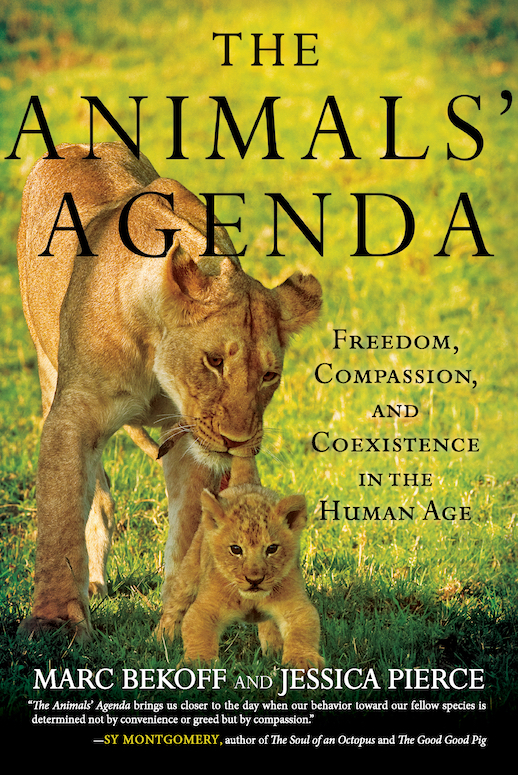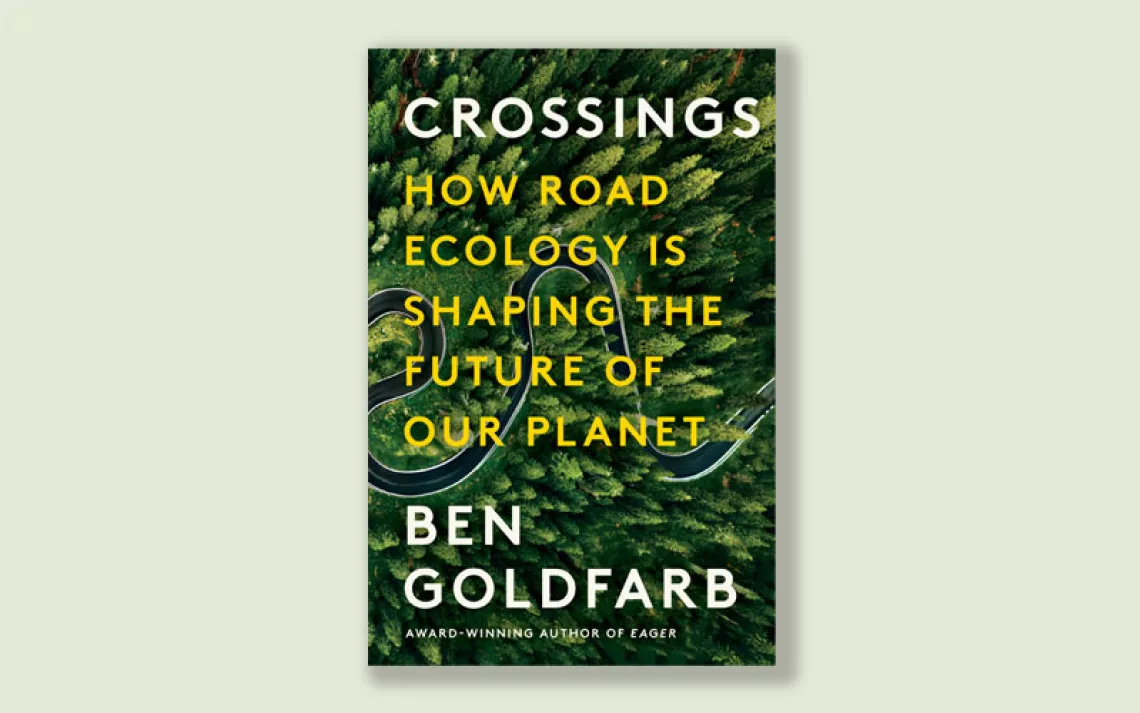Owl Versus Owl
An excerpt from the new book "The Animals’ Agenda"

Photo by BrianEKushner/iStock
Excerpted from The Animals’ Agenda: Freedom, Compassion, and Coexistence in the Human Age by Marc Bekoff and Jessica Pierce, Beacon Press, 2017. Reprinted with permission from Beacon Press.
 One of the most contentious conservation “trade-offs” of the past few years has been the decision to protect the northern spotted owl by killing barred owls. The northern spotted owl lives in old-growth forests in the Pacific Northwest, and because of intense pressures from habitat loss due to logging is critically endangered. The barred owl is an East Coast species but has been migrating west into the forests of the spotted owl. Barred owls are larger and more aggressive, and in forests where barred owls have settled, the spotted owls have been disappearing. Biologists are uncertain exactly how or even whether the barred owls are affecting the spotted owls, but in a desperate move to stop the process, the U.S. Fish and Wildlife Service proposed in 2013 an experimental culling of barred owls to see if spotted owls might show some recovery.
One of the most contentious conservation “trade-offs” of the past few years has been the decision to protect the northern spotted owl by killing barred owls. The northern spotted owl lives in old-growth forests in the Pacific Northwest, and because of intense pressures from habitat loss due to logging is critically endangered. The barred owl is an East Coast species but has been migrating west into the forests of the spotted owl. Barred owls are larger and more aggressive, and in forests where barred owls have settled, the spotted owls have been disappearing. Biologists are uncertain exactly how or even whether the barred owls are affecting the spotted owls, but in a desperate move to stop the process, the U.S. Fish and Wildlife Service proposed in 2013 an experimental culling of barred owls to see if spotted owls might show some recovery.
The experimental culling was highly controversial, and so the USFWS hired Clark University ethicist Bill Lynn to put together a series of stakeholder meetings to explore the ethics of the lethal experiment. In a long ethics brief written by Lynn, he raised serious concerns about experiments on wild animals. He noted that such experiments are subject to far less ethical scrutiny than experiments on lab animals, and lab animals have at least minimal federal protections while wild populations have none. Lynn noted, “Currently, there are no regulations in the United States that vigorously protect the well-being of individual wild animals in field experiments.” He also wrote that “many in the Barred Owl Stakeholder Group believed that the USFWS should take a strong leadership role in developing ethical guidelines for field experiments that explicitly take into account the well-being of individual wild animals.” Nevertheless, Lynn concluded that it was acceptable to kill the barred owls as an experiment, as long as the killing was “humane.” However, he balked at supporting a region-wide war on barred owls. Lynn called the killing of barred owls a “sad good.” The Barred Owl Stakeholder Group didn’t actually include any barred owls, but if it had we can bet that they would have strenuously objected to the decision. From the barred owls’ point of view, the killing was what coauthor Marc Bekoff called a “sad bad.” On the other hand, if any spotted owls weighed in, they may have welcomed the decision. They are suffering, too. Of course the best way to protect spotted owls is for humans to stop logging their forests. It is really not owl versus owl, but humans that set up the circumstances of competition.
Another kind of trade-off involving the sacrifice of certain animals for the sake of others is the practice of giving prey animals to carnivores so that they can “practice” hunting. This is sometimes considered necessary when a species is on the verge of extinction and there are plans to reintroduce into the wild members of the species raised in captivity. Plans by a group called Save China’s Tigers, for example, reported that in order to reintroduce critically endangered captive South China tigers back to restored protected areas within their historic range in China, they have allowed the tigers to practice killing deer-like ungulates called blesbok. Within the United States, measures to reintroduce endangered black-footed ferrets included breeding thousands of golden hamsters so that the captive-born ferrets could practice killing the hapless hamsters before being released into wild habitat. For many, this sort of “playing the numbers game” is unacceptable. Just because golden hamsters are plentiful and we can “make” as many as we need doesn’t mean they should be bred merely to be practice prey.
One thing to note about these trade-offs is that in nearly all of these instances, the conflict between species was spurred by the unrelenting spread of humans into wild areas. As habitat shrinks and pressures for food and space intensify, some animals will struggle more than others to survive. For example, Idaho is considering poisoning thousands of ravens because they are threatening the survival of greater sage grouse. But the reason ravens have such an advantage is that human encroachment on sage grouse habitat has left the animals vulnerable. Power lines and communication towers have provided perfect places from which ravens can spot sage grouse nests and steal the eggs. Although conservation officials may say that the only option is lethal control of one species over another, the real trade-off has already been made, and humans have forced all the animals into a losing position.
We are not going to suggest that trade-offs can be avoided, for in our overpopulated and challenging world they can’t be. However, we are arguing that the barometer has to be adjusted so that the integrity of individual animal lives has a much stronger pull. There will be blood. That much is sure. But less blood and suffering are certainly better than more, and there are many ways to reduce the carnage.
 The Magazine of The Sierra Club
The Magazine of The Sierra Club







